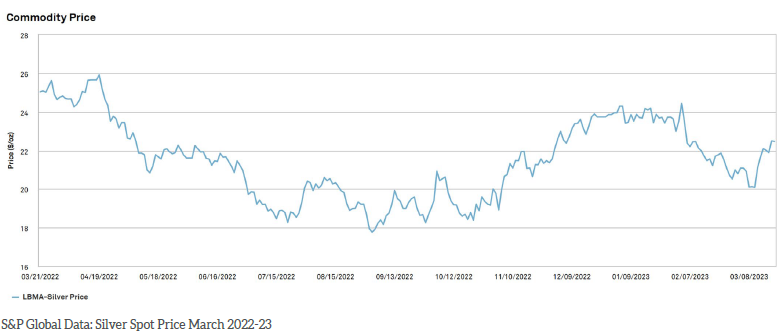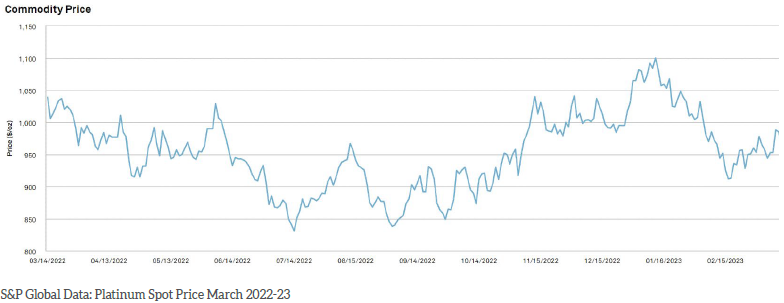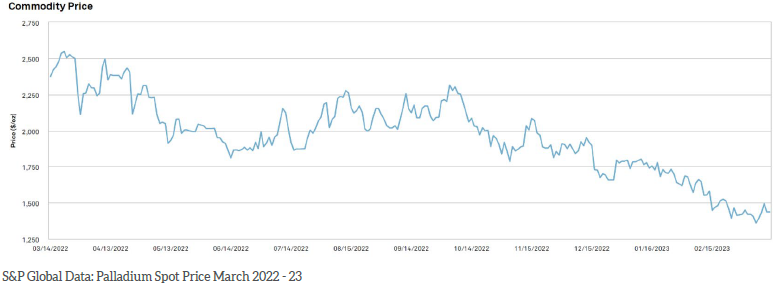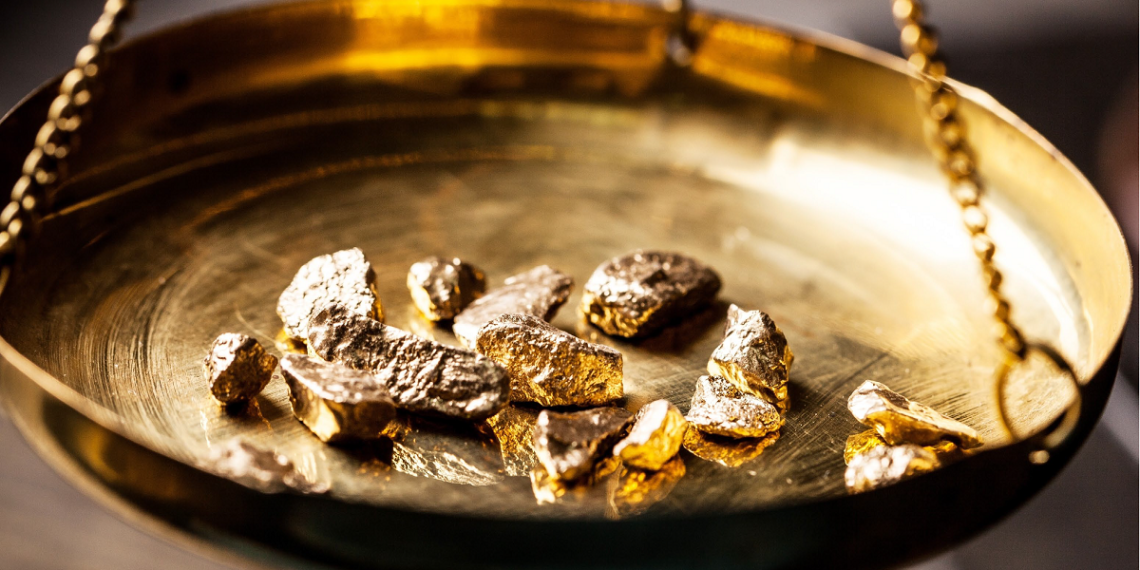Some investors believe gold’s performance should have been much stronger in recent months, driven by the narrative of worldwide inflation due to COVID-19 and the Ukraine war.
Nevertheless, gold outperformed most major assets in 2022, exceeding inflation-linked bonds both in the US and elsewhere. Gold prices dipped slightly in November, most likely due to the strengthening of the US dollar and the US Federal Reserve (Fed) hiking up interest rates.
Gold prices then retreated to US$1,628 on 11 March 2023, and have once again peaked at US$1,985.8 on 20 March 2023. This is the highest level since March 2022, which topped at US$2,056.
The precious metal has gained over 2.84% since the start of 2023 (as of 8 February) strengthened by China’s reopening and thus the expected growth in demand.
Generally over the last five years, the gold trend has been one of sustained growth, and this looks set to persist, in what is a new commodities super-cycle.
Total gold mine production has also risen 2% year-on-year in 2022, halting recent years of consecutive declines from 2019-22, which were largely due to COVID-19 disruptions.
S&P reported that multidecade-high inflation rates have impacted gold producers’ all-in sustaining costs, particularly in 2022, intensified by Russia’s invasion of Ukraine. Global gold supply rose 2.2% quarter over quarter in the December 2021 quarter — driven mainly by Canadian production — maintaining production above pre-pandemic levels.
Profit margins also increased slightly, to US$675/oz from US$670/oz in the previous quarter. For full- year 2021, supply rose roughly 2.7% year over year as production recovered from the pandemic-induced lows of 2020.
Silver
The Silver Institute (TSI) reported that 2023 has commenced with silver prices benefiting from the upside in gold and base metals, with the latter driven in part by China abandoning its zero COVID policy.
However, looking further ahead, TSI believes that the US Fed will continue in the coming months to lift interest rates, albeit more modestly than seen in previous years.
With inflation on course to ease much further this year, it is expected that real rates will strengthen. This, together with its impact on the dollar, could undermine silver prices. Even so, because of the earlier price upside, TSI forecasts silver to average US$23.00 for the full year, which would be around 6% higher year on year.


Platinum
Meanwhile, platinum spot prices reached a year high at US$1,100/oz on 11 January. However, prices steadily declined over the course of the following month, reaching a low of US$912 on 16 February.
Yet, elevated prices are expected to emerge in 2023, as the World Platinum Investment Council predicts that the platinum market will move into deficit this year.
Demand for platinum is expected to rise by 24%, with the automotive industry accounting for 10%. This is due to heightened platinum for palladium substitutions and higher loadings.
Industrial demand is also projected to reach a record high, up 12% from last year.
Platinum supply is not set to meet demand, with forecasted growth to only be a marginal 3% in 2023, with the total mining supply being little improved due to weaker production from South Africa and Russia.
Palladium
The palladium market has seen a significant decline of 19.27% since the start of 2023. As of 2 March, palladium spot prices dropped to US$953/oz. This is the lowest spot price since March 2022.
This could be accredited to a general worldwide economic slump in the wake of stringent COVID restrictions, high inflation rates, and global recession.
Palladium is also more expensive than platinum, and as previously mentioned, is more frequently being substituted by its precious counterpart in the manufacture of catalytic converters, therefore reducing overall demand.
Moreover, the significant 2020 issues surrounding a shortage of semiconductor chips forced companies to cut vehicle production, reducing both platinum and palladium demand.
“It was really an issue in 2022, specifically the first two, three quarters,” Voser told CNBC at the World Economic Forum in Davos, Switzerland, in a recent interview. “But if I look today at it, I think it’s now being sorted out. I think global growth slowdown has helped on this as well, and now for the future I’m quite optimistic.”
In August 2022, Russia-based palladium giant Nornickel (GMKN: MICEX) stated that supply chain disturbances caused by Western sanctions resulted in an overall reduction of sales for the first half of 2022.

In its second-half report, the company indicated that supply was projected to grow in 2022, however, “the downside risk remains due to the infrastructure flooding at the Stillwater mine and a potential strike at the Sibanye-Stillwater assets in South Africa”.
Further, in its latest half-year report, Sibanye-Stillwater’s mine operations in Montana were also affected by a significant flooding event in June 2022. This forced the company to cut its output forecast to 445,000-460,000oz in 2022.
Despite this, Nornickel has since said that it expects to see a growing deficit in the palladium market in 2023, with supply from Russia still posing a risk. The general outlook for palladium is mixed, with S&P Global reporting another 2.0% downgrade for 2024 followed by 2.9% and 8.0% improvements in 2025-26.
The report asserts that this is likely due to predicted increased use in fuel cells for green energy generation.
Overall, there are various factors influencing precious metal prices now, not least of which is the aggressive rate hikes from the US Fed and the reeling after-effects of COVID-19.
This last year has seen some low spot-prices across all four of the precious metals – gold, silver, platinum, and palladium – and although there are predictions of subtle recovery, they might remain well below their pre-2022 prices.












